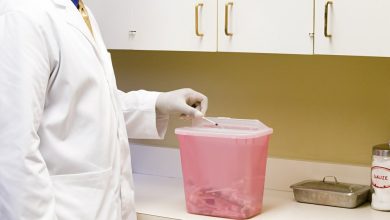Sources of Risks in Office-Based Surgeries

A survey of a cohort of patients undergoing cosmetic surgery between 2008 and 2013-revealed age, gender, body mass index, smoking, diabetes and type of procedure as potential risk factors during office-based surgery (Gupta et al., 2017). Although the study did not specifically address inherent risks to office surgery procedures, it highlighted some of the challenges physicians and surgeons experienced in the delivery of quality care and procedures. The authors cite the outpatient setting as the source of risks in outpatient settings. Similarly, a study by Lapetina and Armstrong (2002) revealed that services such as the provision of anesthesia and the lack of accreditation of outpatient centers, coupled with the growth in demand for cosmetic services that require surgery has increased the levels of risk to patients from inadequate and unmaintained equipment and actors in such centers with questionable character and experience. (If you need a similar paper, contact buytermpaper online).
The lowered cost of services offered at office-based care has seen a drastic rise in demand for services despite the risks. Services such as cosmetic surgery and reconstructive procedures provide a direct form of payment to physicians, as they are not covered by insurance. Yet, despite their proliferation, such facilities are not obligated by law to report incidents or any form of inpatient error. Indeed, few states require such facilities to institute any form of mandate to protect clients. Among errors at such facilities, include wrong anesthesia administration or lipoplasty (Lapetina and Armstrong, 2002). The authors cite a study that revealed a significant increase in the number of sedation events in pediatric hospitals, with nearly 93 percent of the sampled outpatient centers experiencing some form of adverse sedation event. Furthermore, such centers are common with inadequate resuscitation from poor outcomes.
The characteristics common at the outpatient centers make them prone to risk and are a constant source of risk. Lapetina and Armstrong (2002) classify the characteristics into two groups: on one side is the outpatient center setting itself and the other is the actors therein. The lack of strict regulation compared to public facilities means that outpatient centers can have inadequate facilities yet conduct procedures. Such facilities are often incapable of dealing with emergencies or crisis while they occur, despite performing some of the most complex procedures of human anatomy such as facial reconstruction. In some stations, outdated equipment is not replaced while others grapple with poorly maintained equipment. (Order a custom paper @ Discussionboardhomeworkhelp.com)
Meanwhile, the actors during office-based surgeries make for a constant and high source of risk. Unlike in the public healthcare system where resident doctors undergo thorough vetting by a medical board before practicing, practitioners at private centers do not require vetting, often competing from a reputation, and cost perspective. Some of the practitioners lack peer review and training to perform complex procedures, yet, many would not turn down offers to perform intricate processes to generate revenue. Lapetina and Armstrong (2002) posit that “peer reviews enable colleagues to judge competence, skill, and readiness to perform procedures” an attribute often missing from private medical centers. Besides, such practitioners do not have a high level of contact to allow them to consult widely before or during procedures, thus placing their patients at risk should complications occur. Moreover, developments in the medical fields are kept in closed quarters, thus locking non-collaborative practitioners from such information. As a cost-cutting measure or sheer ignorance, some of the practitioners in office-based surgeries perform operations without an anesthesiologist or anesthetist present, further exposing their patients to risk.
Besides the lack of experience and peer review, practitioners at office-based surgery centers perform intricate procedures with outdated or with no equipment. These centers expose their clients to risks, as some do not employ personnel required during some of the procedures they undertake such as anesthesiologists or anesthetists. Indeed, outpatient centers require regulation as they have numerous sources of risks that could cause severe harm to patients.
References
Gupta, V., Parikh, R., Nguyen, L., Afshari, A., Shack, R. B., Grotting, J. C., & Higdon, K. K. (2017). Is office-based surgery safe? Comparing outcomes of 183,914 aesthetic surgical procedures across different types of accredited facilities. Aesthetic surgery journal, 37(2), 226-235.
Lapetina, E. M., & Armstrong, E. M. (2002). Preventing errors in the outpatient setting: a tale of three states. Health Affairs, 21(4), 26-39.




